Acoustic sensors enable efficient and non-invasive monitoring of a wide range of species, including many that are difficult to monitor in other ways. Although they were initially limited in application scope largely due to cost and hardware constraints, the development of low-cost, open-source models like the Audiomoth in recent years has increased access immensely and opened up new avenues of research. For example, some teams are using them to identify illicit human activities through the detection of associated sounds, like gunshots, vehicles, or chainsaws (e.g. OpenEars).
With this relatively novel dimension of wildlife monitoring rapidly advancing in both marine and terrestrial systems, it is crucial that we identify and share information about the utility and constraints of these sensors to inform efforts. A recent study identified advancements in hardware and machine learning applications, as well as early development of acoustic biodiversity indicators, as factors facilitating progress in the field. In terms of limitations, the authors highlight insufficient reference sound libraries, a lack of open-source audio processing tools, and a need for standardization of survey and analysis protocols. They also stress the importance of collaboration in moving forward, which is precisely what this group will aim to facilitate.
If you're new to acoustic monitoring and want to get up to speed on the basics, check out these beginner's resources and conversations from across the WILDLABS platform:
Three Resources for Beginners:
- Listening to Nature: The Emerging Field of Bioacoustics, Adam Welz
- Ecoacoustics and Biodiversity Monitoring, RSEC Journal
- Monitoring Ecosystems through Sound: The Present and Future of Passive Acoustics, Ella Browning and Rory Gibb
Three Forum Threads for Beginners:
- AudioMoth user guide | Tessa Rhinehart
- Audiomoth and Natterjack Monitoring (UK) | Stuart Newson
- Help with analysing bat recordings from Audiomoth | Carlos Abrahams
Three Tutorials for Beginners:
- "How do I perform automated recordings of bird assemblages?" | Carlos Abrahams, Tech Tutors
- "How do I scale up acoustic surveys with Audiomoths and automated processing?" | Tessa Rhinehart, Tech Tutors
- Acoustic Monitoring | David Watson, Ruby Lee, Andy Hill, and Dimitri Ponirakis, Virtual Meetups
Want to know more about acoustic monitoring and learn from experts in the WILDLABS community? Jump into the discussion in our Acoustic Monitoring group!
Header image: Carly Batist
- @Alawa
- | She/Her
Passionate wildlife and biodiversity conservationist
- 0 Resources
- 0 Discussions
- 24 Groups
- 0 Resources
- 0 Discussions
- 5 Groups
I am a a field biologist and a bat researcher interested in ecology, biodiversity, and conservation of mammals, especially Chiroptera.
- 0 Resources
- 0 Discussions
- 4 Groups
- @Tim_Hofmeester
- | he/him
Swedish University of Agricultural Sciences
Researcher studying human-wildlife coexistence -- Camera trapper
- 4 Resources
- 1 Discussions
- 5 Groups
- @drelliott
- | he/him
Microbial ecologist in Derbyshire UK
- 0 Resources
- 0 Discussions
- 4 Groups
- @weygoldt
- | he/him
PhD student at the Neuroethology Group in Tuebingen interested in data science & quantitative behavior of electric fish.
- 0 Resources
- 0 Discussions
- 4 Groups
- @mattaudette
- | he, him, his
Software Tester and Test Automator at Wildlife Protection Solutions
- 0 Resources
- 1 Discussions
- 24 Groups
- @williams
- | He/Him
I am a conservationist specializing in endangered species, particularly vultures. As the Endangered Species Conservation Coordinator/Co-Founder at Biota Conservation Hub Foundation (BiotaCHF), I have conducted extensive research/conservation of vultures and other water birds.
- 0 Resources
- 0 Discussions
- 14 Groups
I am a biologist from Paraguay, my work focuses on amphibian ecology.
- 0 Resources
- 0 Discussions
- 2 Groups
- @ARobillard
- | He/Him
A conservation data scientist and field ecologist with broad interest in the application of machine learning and population genetics to the conservation of threatened species. Alex has conducted field studies throughout central and south America, the Caribbean, and North America.
- 2 Resources
- 2 Discussions
- 8 Groups
- @KathHecht
- | she/her
I am a biologist/ecologist without concrete specialisation. New Zealand's unique but fragile flora & fauna have taught me the importance of increasing awareness with locals and visitors alike. This is my constant motivator.
- 0 Resources
- 0 Discussions
- 10 Groups
- @aniyaz533
- | Niyaz
A keen willdlife biologist looking forward to work on Otters ecology in Himalayan landscape
- 0 Resources
- 0 Discussions
- 5 Groups
This latest chapter in the Conservation Technology Series from WWF-UK looks at the opportunities, challenges and state-of-the-art of satellite remote sensing for conservation applications. This issue reviews available...
23 April 2018
Hundreds of people joined our #Tech4Wildlife photo challenge this year, showcasing all the incredible ways tech is being used to support wildlife conservation. We've seen proximity loggers on Tasmanian Devils in...
3 March 2018
Our panel of international experts has been hard at work reviewing the 47 proposals we recieved for innovative technological tools to address human wildlife conflict. The panelists have systematically been assessing the...
20 October 2017
The inherent complexity of not only deploying technologies in the field but also doing so in a scientifically rigorous manner can prove a substantial barrier for the effective use of conservation technologies, and clear...
11 October 2017
Its been a busy couple of months for the Open Acoustic Devices team. They've just returned back from Belize where they have been trialling the new AudioMoth design for gunshot detection. Find out what they've been up to...
27 June 2017
Are you ready for this year's #Tech4Wildlife Photo Challenge? In anticipation, we're counting down our ten favourite entries from last year. Do you think you can top these?
1 March 2017
The Conservation Leadership Programme (CLP) is a training and capacity building programme that targets individuals from developing countries who are early in their conservation career and demonstrate leadership...
21 November 2016
Do you work on conserving Neotropical migratory birds? Do you need funding? Why not apply for a grant from the U.S. Fish and Wildlife Service through the Neotropical Migratory Bird Conservation Act's grant program? The...
8 November 2016
Caves don't tend to be well-liked ecosystems, being extremely dark, often quite cramped, and slippery. And the creepy-crawlies that live within them can be the stuff of nightmares. Nevertheless, one's attitude towards...
25 July 2016
More than half of all primate species are endangered, including our closest living relative, the chimpanzee. Could Passive Acoustic Monitoring (PAM) be applied to primates as well as it has been for other taxa? In this...
29 June 2016
Since 2013, volunteer citizen scientists taking part in the Norfolk Bat Survey have generated over 1.2 million bat recordings, making this one of the most extensive high-quality datasets for bats collected by citizen...
5 February 2016
New horizon scanning report published this month identifies 15 emerging threats and opportunities for global biodiversity.
3 February 2016
June 2025
July 2025
September 2025
event
October 2025
November 2025
event
July 2024
event
May 2024
61 Products
| Description | Activity | Replies | Groups | Updated |
|---|---|---|---|---|
| Hi Mona. Yes, this is what we certainly what we are considering, but how to measure these indices by the hands of non-experts in the field is the advice that I need from the WL... |
|
Acoustics | 1 day 19 hours ago | |
| Would that be able to process locally stored acoustic data? One of the great things about birdnet analyzer is that it is local - it doesn't require uploading terabytes... |
|
Acoustics | 4 days 10 hours ago | |
| Do you collect or use sound recordings of habitats or species like birds, frogs, mammals, or insects in India? We need your expertise!... |
|
Acoustics | 1 week 2 days ago | |
| My name is Frank Short and I am a PhD Candidate at Boston University in Biological Anthropology. I am currently doing fieldwork in Indonesia using machine-learning powered passive... |
|
Acoustics, AI for Conservation, Animal Movement, Data management and processing tools, Early Career, Emerging Tech, Ethics of Conservation Tech, Protected Area Management Tools, Software Development | 2 weeks 1 day ago | |
|
|
Latin America Community, Acoustics, AI for Conservation, Camera Traps, Drones, Early Career | 2 weeks 6 days ago | ||
| There are a lot of parameters in principle here. The size of the battery. How much time in the field is acceptable before a visit? Once a week? Once a month? How many devices you... |
|
Acoustics | 3 weeks 1 day ago | |
| Hi Tom! I think the furry windjammer must be outside the casing to have the desired effect. It can be a bit tricky having this nice furry material that birds and other critters... |
|
Acoustics | 3 weeks 3 days ago | |
| Hi Lana,"similar field setup" means that the vocalizing animal should be surrounded by the recorders and you should have at least 4 audiomoths recording the same sound, then the... |
+9
|
Acoustics | 3 weeks 3 days ago | |
| Fantastic! Can't wait to hear updates. |
|
Acoustics | 4 weeks 1 day ago | |
| New stable release : v1.5.1We are pleased to announce the latest release with several important enhancement, fixes and documentation improvements to ensure compatibility with the... |
+15
|
Acoustics, AI for Conservation, Open Source Solutions, Software Development | 1 month 1 week ago | |
| Hello everyone,Thank you all for your contribution!You can read some updates about this project in this post.Julia |
|
Acoustics, Community Base, Data management and processing tools, Open Source Solutions | 1 month 2 weeks ago | |
| Hi Ryan, hmm, I had no idea there was a microphone named that. I thought about how it’s used to lure birds for netting, and I like Greek Mythology. I thought it was a perfect fit... |
|
Acoustics, Emerging Tech, Funding and Finance, Protected Area Management Tools, Software Development | 1 month 2 weeks ago |
New Papers: Remote Sensing in Ecology and Conservation
22 April 2021 12:00am
Webinar: Mission Possible: Deployment
 Wildlife Acoustics
Wildlife Acoustics
21 April 2021 12:00am
Webinar: Acoustic Tag Technologies and Applications
 The Discovery of Sound in the Sea
The Discovery of Sound in the Sea
20 April 2021 12:00am
BirdCLEF 2021 Kaggle Challenge
 The Cornell Lab of Ornithology
The Cornell Lab of Ornithology
19 April 2021 12:00am
Webinar Series
14 April 2021 1:38pm
Organize audio files by frequency
6 February 2021 3:58am
18 March 2021 7:00pm
As Carlos mentioned, the R packages would be good if you're just looking for summary stats averaged over the whole 10s of the fiie. You would just read that directory into R and load seewave, tuneR, warbleR (I think monitoR may also have this functionality). Perhaps helpful links -
seewave - http://rug.mnhn.fr/seewave/
tuner - https://rdrr.io/rforge/tuneR/
warbler - https://marce10.github.io/warbleR/
9 April 2021 3:55pm
I'm assuming that by "sort by frequencies" you mean the frequency of the call itself, not the frequency of the audio recording (for example, a call at 1KHz vs a recording at a sample rate of 48KHz). My recommendation would be to use R (seewave/tuneR) to generate mean spectra of the recordings (meanspec function) and you can then use those mean spectra to figure out the peak frequency range and sort by that.
Survey Invite: Open-source acoustic monitoring technology
9 April 2021 12:00am
The 2021 #Tech4Wildlife Photo Challenge: Community Highlights
25 March 2021 12:00am
Take the survey: your needs and priorities for (open-source) acoustic monitoring technology
25 February 2021 12:45pm
22 March 2021 11:29pm
Hey everyone, only 5 DAYS LEFT to take the survey! We’re just short of 100 respondents now, and would be great to get as much coverage as possible! Please consider responding if you haven’t done so already, and spread to your contacts who might be interested.
Responses so far show a clear support for the open-source option for acoustic monitoring technology. Almost 70% would be willing to spend time or resources to learn (or have someone in their team learning) the skills that allow you to customise open-source acoustic devices. More than half thought it would be useful to have a “developer version” of an acoustic device (that you can tinker with, and integrate/connect to other devices).
Please contribute your thoughts to help the acoustic community design the open-source monitoring technology of the future!

24 March 2021 4:13am
Hi everyone, we’ve decided to extend the survey for 3 more weeks, until the 18th of April!
That will be the final date (the online survey tool we use is not free, and we’ve got budget limitations :-)
We’re now over 100 respondents from all continents, but we do have significant gaps (e.g. SE Asia and China, many parts of Africa) which we would love to cover. There is also a slight bias towards terrestrial acoustics (only 18% report working in aquatic habitats), but this might just reflect the number of people working in terrestrial vs aquatic acoustics generally. In any case, would also love to get more respondents from the wet side of life. Please participate and spread to your contacts.
And big thanks to those of you who’ve already participated!!
Funding Opportunity: COVID-19 Science Fund
10 March 2021 12:00am
Sound library for small terrestrial mammals
31 January 2021 1:42pm
12 February 2021 6:05pm
Stuart, that is really cool! Are these clips translated into audible frequency range?
12 February 2021 8:26pm
Hi Phil, the playable spectrograms have been translated into the audible frequency range (by playing in 10 x time expansion), becuase the small mammal calls are mainly above our hearing range, but a copy of the original wav files can be downloaded from the web site.
12 February 2021 9:15pm
Ah, perfect. I was wondering why I never hear those calls!
That's really nice work, thanks so much for sharing!
How do I strategically allocate drones for conservation?
8 February 2021 12:00am
Audiomoth and Natterjack Monitoring (UK)
23 December 2020 8:16pm
31 January 2021 2:09pm
Hi Sarah, I'm curently working on the sound identification of native and introduced frogs in the UK. I need another season of recordings, and a lot more recordings of Natterjack's, but my aim is to build these into the BTO Acoustic Pipeline hopefully later this year - alongside bats, small mammals, bush-crickets etc to also identify these automatically when they are recorded as 'by-catch.' https://www.bto.org/pipeline.
31 January 2021 3:26pm
Hi Stuart, What sample rate do you think you could go down to? We're interested in a low-power AudioMoth firmware version for this application. Alex
31 January 2021 4:38pm
Hi Alex, I'm not sure what problems there could be with aliasiing and harmonics using a low sample rate, and may depend I guess on how the recordings are processed later on, but I've enclosed a spectrogram of a typical recording below, and can send you some example recordings if useful. Perhaps to use a sample rate of about 10 kHz.., but it's not something that I think about - I always use an excessive sample rate (24 kHz for anurans).

BTO Acoustic Pipeline - is launched!
31 January 2021 1:37pm
EarthHz tool
29 January 2021 3:39pm
warbleR / R packages for bioacoustics forum
2 December 2020 11:45am
4 December 2020 3:21pm
Hi all!
Just as a general resource, @tessa.rhinehart has a really awesome table of different bioacoustic software and R packages with their varied functionality: https://github.com/rhine3/audiomoth-guide/blob/master/resources/analysis-software.md.
I haven't worked with warbleR directly, but I've played around in monitoR and gibbonR for passive acoustic monitoring analyses.
You might also just reach out to Marcelo (writer of the package) and ask directly...
Happy coding!
Carly
20 December 2020 2:10am
I used the package soundecology in R: URL: http://ljvillanueva.github.io/soundecology/ and https://cran.r-project.org/package=soundecology
This package helps to calculate several acoustic index using .WAV files. Is possible to analyses several files as same time.
Best regards!
17 January 2021 6:44pm
Hi all thanks for the answers!
Carly - thanks, will have to try yours. I did the course at the Organisation of Tropical Studies with Marcelo, which was awesome, but this is not something he's keen on answering, I think he has other ways of doing it. Sorting it out on Github atm. Hope your moving terabytes of data is going well :)
domingos - thank you, I do know about this one, but having a selection table in warbleR opens up to a lot of various other options that can be really useful. Will keep you updated.
Thanks
Axel
Workshop: Analyses of acoustic telemetry data with R
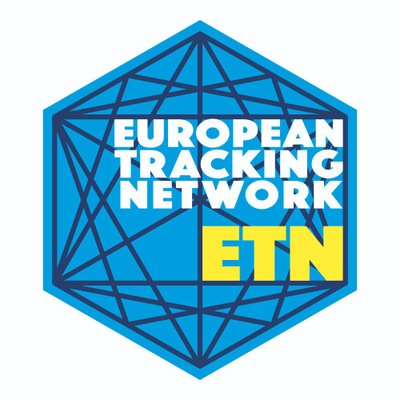 European Tracking Network
European Tracking Network
15 January 2021 12:00am
Analyzing sounds of flying insects
17 December 2020 2:08pm
18 December 2020 6:14pm
this guys has been around a long and has some neat stuff http://songsofinsects.com/about
but sure looks like a wide-open area of research ...
4 January 2021 12:26pm
Tom Dally at Leeds University UK is doing work in this area. I dont think he has anything published yet but his preliminary results are interesting (saw them at a workshop).
https://biologicalsciences.leeds.ac.uk/school-of-biology/pgr/753/thomas-dally
Tom
Tech Tutors: How do I use pattern matching analysis to label acoustic data with RFCxArbimon?
17 December 2020 3:31pm
17 December 2020 9:22pm
Thanks everybody for joining today's session! I've attached the article here that describes Pattern Matching in greater detail to respond to some of the questions from today's session.
Also, here is a link to our Privacy Policy and our Terms of Service for the individual who had questions about GDPR. Feel free to contact us at support@rfcx.org with any other questions about the platform or Pattern Matching in general!
23 December 2020 3:21am
Zephyr and Marconi, thanks for the great talk and your hard work that made this platform available to the public!! I'm experimenting with the pattern matching function to create some training data but have issues trying to get the "Jobs'' to run. I only have 18 files for each of these tests, but only 1 processed to 11.1% while two others stay at 0%. The internet connection was briefly interrupted when I created the first job and was fine later on. I can only Hide, not delete or re-run these jobs, so I'm not sure what to do. Any suggestions would be greatly appreciated. Thanks so much!
23 December 2020 3:27pm
Hi @pmnguyen1224 , thanks for reaching out and checking out the system! We would love to help ensure that you're able to get pattern matching to work for you! I do have a few questions for you so we can replicate issue you are experiencing. Would you mind emailing us a couple screenshots and your original message above at support@rfcx.org to get started? Or feel free to send us a chat if that's easier, by clicking on the chat icon on https://arbimon.rfcx.org/. Looking forward to supporting you moving forward!
FIS Call for Expressions of Interest (closed)
8 December 2020 12:00am
How do I use pattern matching analysis to label acoustic data with RFCx Arbimon?
8 December 2020 12:00am
Calling all hydrophone users: Tell us what you want!
26 November 2020 10:52am
6 December 2020 5:50pm
I’ll stick some thoughts here that other folk can maybe comment on/add to.
So there are a few (obvious) differences between terrestrial and marine acoustics.
- Devices are immersed in a highly corrosive and conductive liquid (sea water) with strong underwater currents, fishermen, storms etc.
- Boat’s are usually required to deploy devices - that can mean it is much more expensive to make recordings.
- Ultra high frequency species and noise sources (e.g. harbour porpoise @130kHz and broadband delphinid clicks @ >200kHz and echo sounders @ 200kHz) are relatively common.
For PAM devices that means a few things:
- Longevity is crucial because it can greatly decrease the cost per hour of recordings (less boat time is required). There are a few strategies for maximising this;
- Devices such as FPODs and SoundTraps run onboard detectors. The SoundTrap in particular can run a click detector at high frequency (up to 576khz sample rate) whilst also contiously recording at lower sample rates. This means that it detects high frequency delphinid and porpoise clicks (and saves the waveform for further analysis) and at the same time records all lower frequency sounds where almost all of the complex tonal vocalisations of dolphins, baleen whales and anthropogenic sounds occur; these types of sounds also happen to be more difficult to accurately automatically detect (especially on low powered hardware). This strategy results in an order of magnitude reduction in data without incurring a large cost in data degradation.
- Run on board compression algorithms - the SoundTrap uses an open source X3 compression algorithm that often results in four times lossless data compression.
- Have the space for a lot of batteries and/or the option of an external battery pack.
- Sensitivity is important because you want to maximise your monitored area (again making your survey as efficient as possible). That means choosing a hydrophone, amplifier and DAQ with a low noise floor and appropriate clip level.
- Devices must be robust and waterproof. They should be able to survive biofouling, getting knocked on the seabed and ending up in a fishing net etc. The two common housing designs are to have a completely sealed unit with an underwater connector (often SubConn) for downloading data or having a unit which can be opened to remove memory cards and batteries. Both approaches have their advantages and failure points. For example, devices which are sealed tend to be more simple to set up but the connector is often a failure point. Devices which can be opened are serviceable at sea but they can flood and are air filled which makes them a bigger acoustic target for echolocators (and so can mess up results).
There are also a few ‘nice to have’ options.
- Two sample synchronised hydrophones allowing a bearing to be calculated. This can be useful for a whole host of stuff - for example using bearing tracks to figure out how many animals might be present, improving density estimation methods and allowing an extra data dimension for classification algorithms. It also means the devices are useful for a host of other applications - e.g. towed hydrophone surveys.
- Depth, temperature, tilt and light sensors are inexpensive low power and produce only a few gigabytes (at the very most) of data over a survey but can provide a wealth of oceanographic data that is also helpful in acoustic monitoring.
- If running detectors, then recording noise is critical because it allows us to model changes in the probability of detecting animals which is often important in density estimation.
- Accurate clocks are useful. The SoundTrap clock drifts around 2s per day. Although manageable, this is often a pain and consumes valuable analysis time re-syncing devices together.
- The ability to daisy chain devices so they can be sample synchronised and used in acoustic arrays is very handy. For example SoundTraps have been used to make large aperture hydrophone arrays to localise Kogia. DOI: 10.1016/j.dsr.2020.103233 (if achievable this may supersede point 1. )
Ok, that’s everything I can think of for now. I would be keen to hear other opinions on this, additions, disagreements etc. Jamie
Making the Most of Tech Tutors Season 2!
30 November 2020 12:00am
Kaggle Competition: Species Audio Detection
24 November 2020 12:00am
WILDLABS Tech Tutors: Season Two
24 November 2020 12:00am
Weekly Event: OTN Virtual Study Hall
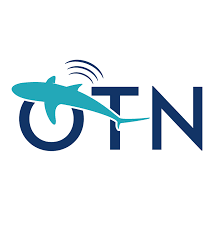 Ocean Tracking Network
Ocean Tracking Network
16 November 2020 12:00am
Hackathon Opportunity: Vaquita Hacks
10 November 2020 12:00am
Funding Opportunity: Wildlife Acoustics Scientific Product Grants
6 November 2020 12:00am
RSEC Journal: Ecoacoustics and Biodiversity Monitoring
28 October 2020 12:00am
Looking for a collaborator with CNN/app development experience
22 October 2020 3:09pm
22 October 2020 8:14pm
Hi Sophia,
Just wondering what 'collaborate' means here - are you looking for a volunteer on the project or do you have budget to support the project?
Steph
23 October 2020 2:24pm
Hi Steph! It could be either - if there was anyone out there for whom this work would be a good fit for their current role, then that would be easy, but if they needed their time paying for then I have extra funds I can apply for, which I would feel fairly confident about.










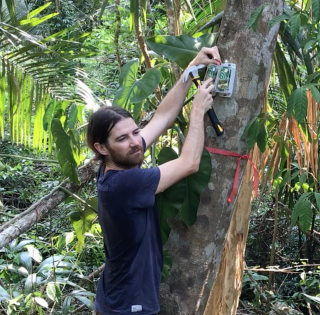

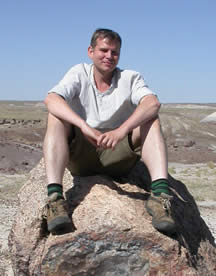

































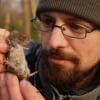















28 February 2021 12:22am
This may not be immediately useful, but I really like this interactive visualisation of bird calls organised by similarity (requires a desktop browser to run the experiment):
https://experiments.withgoogle.com/bird-sounds
They do provide the source code so it may be possible recreate this with your data, but it does seem daunting. One thing to note with these similarity measurements is the pattern or clustering is dependent on the input data. The outcome of this is you may end up with a very different order and pattern with only a sligltyly different set of input data.